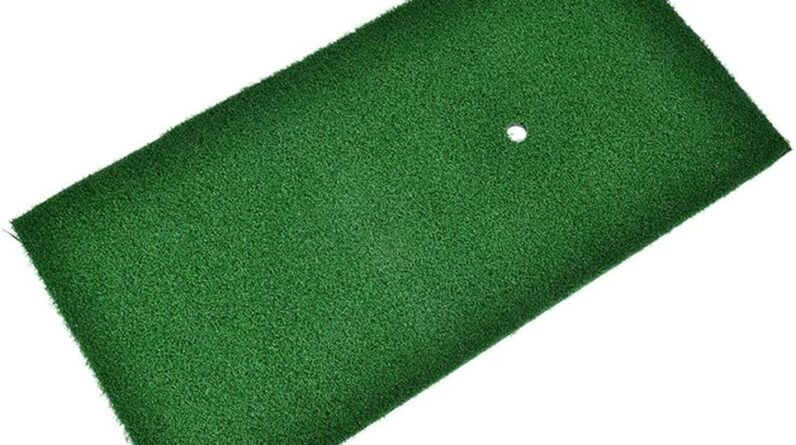If you’ve ever found yourself frustrated with your golf game, feeling like you’re spinning your wheels and not getting any better, then this article is for you. Mastering Golf: The Importance of Practice will show you how to take your skills to the next level through effective and engaging practice. With tips ranging from setting clear goals for each practice session to analyzing your swing, you’ll discover how to make the most out of your time on the range. Additionally, we’ll delve into the benefits of on-course practice, particularly when it comes to scoring skills. So grab your clubs and get ready to elevate your game – because practice truly is key. And remember, it’s all about the process, not just the outcome.
I. Importance of Practice
Practice is the key to improvement in golf. No matter how talented or skilled you are, without consistent practice, you will struggle to reach your full potential on the course. Practice allows you to refine your skills, develop muscle memory, and build confidence in your abilities. It is through repetition and dedicated practice that you can iron out any flaws in your technique and improve your overall performance. So, if you truly want to become a better golfer, making time for regular practice is essential.
II. Tips for Making Practice Fun and Productive
A. Have a clearly defined objective for each practice session
To make your practice sessions more effective, it’s important to have a clear objective in mind. Setting specific goals for each practice session helps you stay focused and gives you something to work towards. Whether it’s improving your putting accuracy or honing your driving distance, having a clear objective will keep you motivated and ensure that your practice time is well spent.
B. Observe and analyze your swing during practice
During your practice sessions, take the time to observe and analyze your swing. Pay attention to your grip, posture, and body rotation. Take note of any inconsistencies or technical errors that may be hindering your performance. By identifying and addressing these issues, you can make the necessary adjustments to improve your swing mechanics and achieve better results on the course.
C. Make each shot on the range as if it were a real one on the course
When practicing on the range, it’s easy to fall into the trap of mindlessly hitting ball after ball without much thought or focus. However, to make your practice sessions more productive, it’s important to approach each shot as if it were a real one on the course. Visualize the target, visualize your shot shape, and imagine yourself executing the perfect swing. By simulating real-game scenarios in your practice sessions, you can better prepare yourself for the challenges you’ll face during an actual round of golf.
D. Challenge yourself with specific goals and limited shots
One of the best ways to make your practice sessions more engaging and productive is to set challenging goals for yourself. Instead of mindlessly hitting balls, give yourself specific targets to aim for or limit the number of shots you can take to achieve a certain outcome. For example, you could set a goal of hitting a certain number of consecutive shots within a defined target area. By introducing these challenges, you’ll push yourself to focus more intensely and improve your accuracy and consistency.
E. Avoid getting in a groove by changing clubs frequently during practice
While it’s important to work on specific aspects of your game during practice, it’s equally important to avoid falling into a repetitive groove. Changing clubs frequently during your practice sessions helps simulate the variety of shots you’ll encounter on the course. By switching clubs, you engage different muscle groups and challenge yourself to adapt to different club lengths, lofts, and swing dynamics. This variety will not only keep your practice sessions interesting but also help you develop a more versatile and adaptable game.

This image is property of www.golfwrx.com.
III. On-Course Practice for Scoring Skills
A. Benefits of on-course practice
While range sessions are essential for honing your swing mechanics, on-course practice is equally important for developing your scoring skills. Playing on the course allows you to experience real-game scenarios, learn how to manage your emotions, and develop a strategic approach to your shots. It helps you understand how different factors such as wind, elevation, and course conditions can impact your decision-making and shot execution. By regularly practicing on the course, you’ll become more comfortable and confident in your ability to score well under various circumstances.
B. Focus on short game and scoring shots from prime scoring range
When practicing on the course, it’s crucial to focus on your short game and scoring shots from the prime scoring range. The short game, including putting, chipping, and pitching, accounts for a significant portion of your overall score. Therefore, dedicating time to practice these shots can greatly improve your scoring ability. Additionally, practicing scoring shots from within your prime scoring range, typically 100 yards and in, helps you fine-tune your distance control and develop a repertoire of shots that you can rely on during a round.
IV. Importance of Proper Grip, Posture, and Body Rotation
A. Grip fundamentals
Having a proper grip is one of the most fundamental aspects of a successful golf swing. Your grip controls the clubface position and influences the accuracy and consistency of your shots. When practicing, pay attention to how you hold the club. Ensure that your grip is neutral and comfortable, with the club resting securely in the fingers. Avoid gripping too tightly, as this can restrict your wrist hinge and create tension in your swing. Practice finding the right balance and pressure in your grip to optimize your control and power.
B. Posture essentials
Proper posture is essential for generating power and maintaining balance throughout your swing. When practicing, focus on achieving a balanced and athletic stance. Your feet should be shoulder-width apart, knees slightly flexed, and weight evenly distributed between both feet. Bend forward from your hips, keeping your back straight and your chin up. This posture allows for a full rotation of your body and helps you maintain stability and control throughout your swing. Take the time to practice this posture and make it a habit for every shot.
C. Body rotation techniques for successful pitch shots
Pitch shots require precise control of both distance and trajectory. To execute successful pitch shots, focus on your body rotation. During the backswing, initiate the movement by turning your shoulders and hips away from the target. Maintain a stable lower body while allowing your upper body to rotate to create coil and power. As you transition into the downswing, use your lower body and core to initiate the rotation and transfer of weight. This rotation generates clubhead speed and allows for a smooth and controlled impact. Practice this body rotation technique to improve your pitch shots and add consistency to your short game.
In conclusion, practice is the key to improvement in golf. By following these tips for making practice fun and productive, incorporating on-course practice for scoring skills, and focusing on proper grip, posture, and body rotation, you can make significant strides in your golf game. Remember to approach each practice session with a clear objective, challenge yourself with specific goals, and embrace the opportunity to refine your skills. With dedication and consistent practice, you’ll see noticeable improvements in your performance on the course. So grab your clubs, head to the range or the course, and enjoy the journey of becoming a better golfer through practice. Happy golfing!






